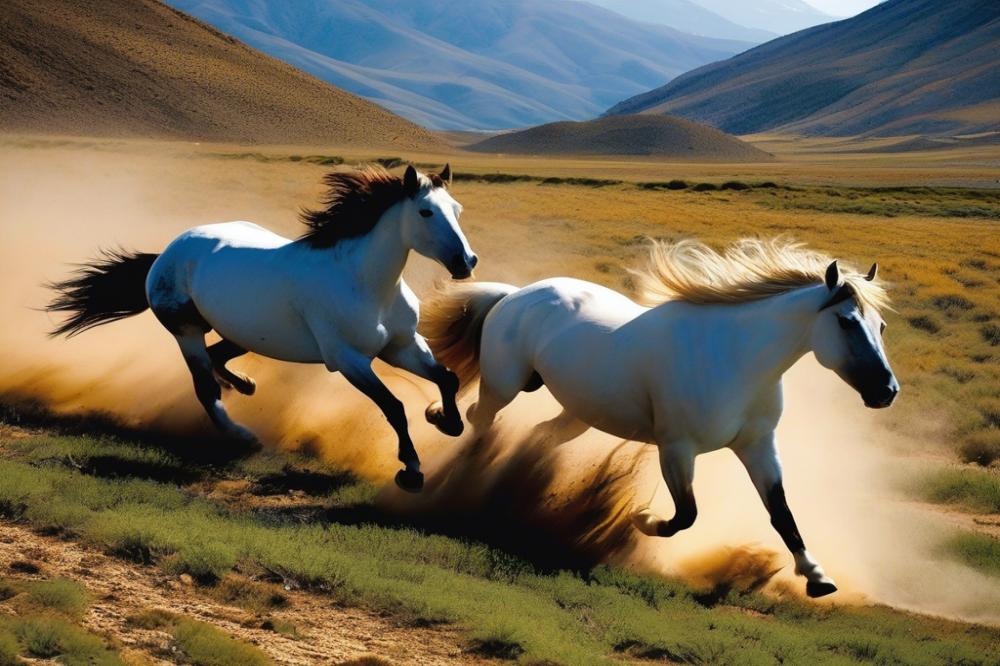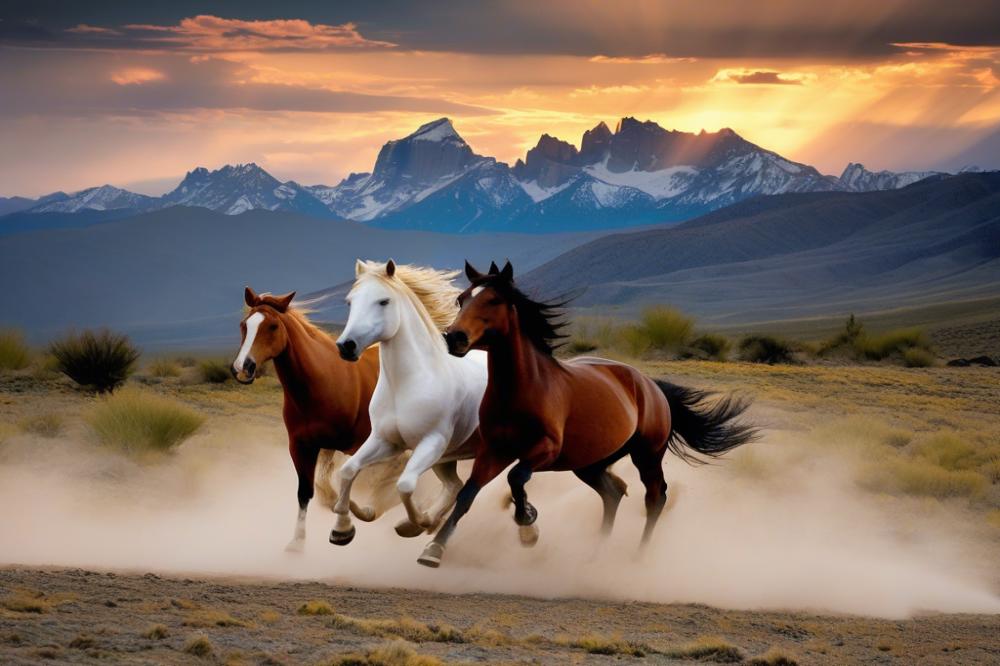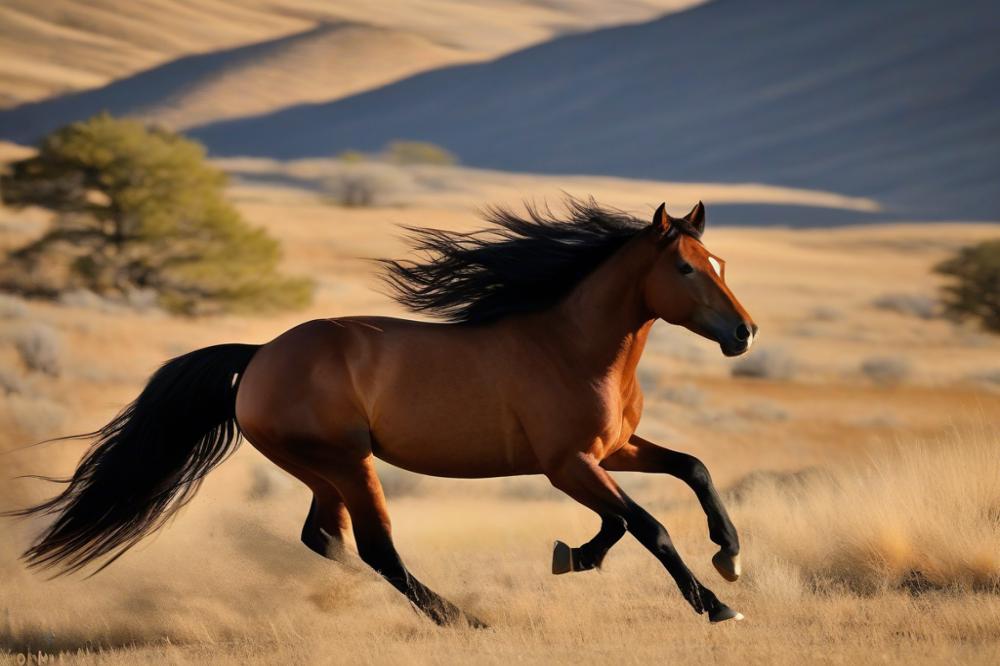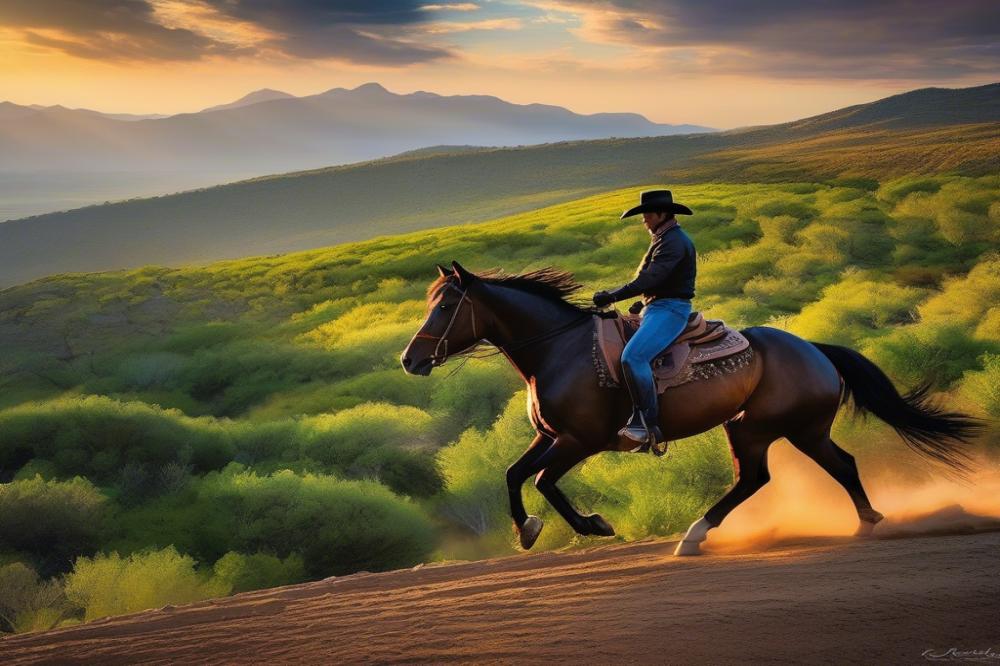Introduction
Riding a Mustang is a thrilling experience that many horse lovers cherish. These powerful and spirited animals bring a sense of adventure to the trails. However, Mustang riding also poses distinct challenges that can test even experienced riders. Maneuvering through rough terrains, steep hills, and tricky obstacles requires skill and understanding of the horse’s instincts.
For those who seek to tackle advanced trail challenges, using advanced techniques is crucial. Riders must know how to communicate effectively with their horse. This interaction involves understanding body language and how to respond to a Mustang’s natural behaviors. With the right approach, a rider can build a strong partnership with their horse, leading to a more successful and enjoyable ride.
The beauty of trail riding lies in its variety. Trails can range from serene paths under a canopy of trees to rugged routes alongside rocky cliffs. Each ride offers different sights and experiences. Some trails may have water crossings while others demand navigating through untamed brush. This diversity makes every outing unique and rewarding. Riders must be prepared for anything that comes their way.
All these factors contribute to the excitement of venturing out on a Mustang. Riders who take the time to refine their skills will find greater joy in the ride. Embracing the challenges and adapting to new situations are essential for any rider wishing to explore trails at a deeper level.
Understanding Mustang Characteristics

Overview of Mustang Breeds and Traits
Mustangs are a type of horse that originated in North America. They are known for their sure-footedness and stamina. Many people appreciate their versatility in various riding disciplines. These horses can adapt to different environments and challenges on the trail. They come in various colors and sizes, adding to their appeal. Some breeds stem from Spanish horses, while others have mixed ancestry. Understanding these characteristics is crucial for riders looking to take on more challenging terrains.
Importance of Natural Horsemanship in Building Trust
Building a bond with a Mustang requires patience and understanding. Natural horsemanship emphasizes communication between horse and rider. This approach helps establish trust, which is vital for success on a trail. Working with your horse in gentle ways fosters a deeper connection. When riders respect their horses’ limits and instincts, they create a safe space. Trust between the two can lead to a more enjoyable experience. Techniques such as groundwork can help strengthen this relationship.
Recognizing Behavioral Traits and How They Affect Riding
Every Mustang has its own personality. Some may be more curious, while others might be cautious. Recognizing these behavioral traits is essential when riding. A horse that appears nervous might need a calming presence. Understanding how your Mustang reacts to different situations can aid in effective riding. Mood swings can occur based on the environment or approach. Be observant of body language and reactions. Positive reinforcement can encourage a Mustang to tackle challenges with confidence.
Essential Equestrian Skills for Advanced trail riding

Developing balance and posture while riding is fundamental for any rider tackling complex trail challenges. Proper alignment can greatly affect a horse’s movement and response. Keep your back straight and shoulders relaxed. Your legs should hang naturally while your feet rest in the stirrups. This strong position allows for better control during dynamic situations.
Communication between rider and horse is vital. This connection involves both verbal commands and body language. Subtle shifts in your weight can signal to the horse how to move. Using a gentle squeeze with your legs may encourage forward movement. Often, a calm voice can reassure the horse, making it more responsive to your guidance.
Techniques for using aids effectively will enhance your riding experience. Hands, legs, and voice should work together harmoniously. When your hands hold the reins softly, the horse feels less pressured. At the same time, your legs can be used for encouragement. Remember, timing is critical. A well-timed cue leads to a smooth transition, whether navigating obstacles or adjusting speed.
Practicing these skills regularly builds confidence. Riders should seek out varied terrain to test their abilities. The more experiences you gather, the better your connection with your horse. Each ride is an opportunity to strengthen that bond and improve your technique. Focus on clear, consistent communication for the best results.
Training for Trail Challenges

Training a Mustang for advanced trail challenges requires understanding their unique nature. These horses often have strong instincts and a natural ability to navigate rough terrain. Therefore, training methods must adapt to their specific needs.
Horse training techniques should include groundwork exercises that focus on communication between the rider and the Mustang. This can help build trust and respect. Guiding the horse with clear signals helps create a solid foundation. Techniques such as desensitization to various stimuli can also play a vital role in preparing them for outdoor challenges. Exposing them to different sights, sounds, and surfaces ensures they feel comfortable in multiple environments.
Building Endurance Through Conditioning
Endurance is crucial when preparing for challenging trails. Building stamina through consistent conditioning routines is essential. Riders should plan regular rides that gradually increase in distance. These rides help strengthen the horse’s muscles and improve their cardiovascular fitness.
Incorporating interval training can also boost endurance levels. Alternating between faster and slower paces pushes the horse’s limits safely. Additionally, including hill work in the routine can enhance strength and agility. Mustangs thrive in mountainous regions, making hill training especially beneficial.
Incorporating Obstacle Courses for Skill Enhancement
Obstacle courses provide practical training opportunities for skill enhancement. Setting up a course with logs, water crossings, and rocks can mimic real trail conditions. Navigating obstacles requires focus and quick thinking, which sharpens the horse’s abilities. Riders can start with simpler challenges and gradually increase complexity as their skills improve.
Adding movement-based obstacles, such as weaving between cones, can enhance coordination. Working through obstacles also teaches the horse to remain calm under pressure. This training not only improves their performance but also builds their confidence.
Engaging in these exercises together strengthens the bond between rider and horse. The lessons learned in a controlled setting translate well to the unpredictability of outdoor trails. Preparing a Mustang for these advanced challenges takes time, patience, and creativity, but the journey can be immensely rewarding.
Saddle Fitting and Equipment Considerations
Proper saddle fitting is essential for Mustangs. A well-fitted saddle provides comfort for both horse and rider. It helps prevent issues such as soreness or chafing. To find the right fit, consider the Mustang’s shape and size. Evaluate the saddle’s tree width and shape in relation to the horse’s withers.
When it comes to equipment, comfort should be a priority. A good saddle pad can significantly enhance the ride. Look for a pad made from breathable materials that wick moisture away. Safety also plays a crucial role. A reliable saddle with secure rigging can help prevent accidents. Always check the equipment before heading out on a ride.
Choosing the right tack involves understanding your needs for trail riding. Trail saddles are often lighter and designed for extended use. Consider stirrups with a broad base for better footing. Ropes, halters, and bridles should be sturdy yet comfortable. Investing in quality gear can make a difference on more challenging trails.
The right bit can be important too. A gentle bit might work better for a Mustang that is sensitive in the mouth. Test different types to see what suits your horse best. Remember that communication between horse and rider is vital, especially in advanced trail situations.
Be sure to pay attention to the overall fit of all equipment. Girths should not be too tight or loose, as this can cause discomfort or affect control. Also, keep in mind the weather. Synthetic materials can be great for wet trails, while leather provides durability and style for dry conditions.
Mastering riding techniques for Trail Safety
Navigating tricky terrain requires specific riding techniques. A solid grip of the reins keeps control when the ground gets rough. Positioning your body properly on the horse plays a major role as well. Leaning slightly forward during steep descents helps maintain balance. Shifting your weight back on inclines is essential for stability. Keeping your heels down prevents slipping and aids in secure footing.
Situational awareness cannot be emphasized enough. Always scan the trail ahead for potential obstacles. Rocks, roots, and uneven ground can catch riders off guard. Listening to the sounds around you also matters. Wildlife or other trail users might approach unexpectedly. Remaining alert to these changes allows for quick reactions, which can prevent accidents.
Riding with others brings its own set of rules. Communication among group members is vital. Agreeing on hand signals for stops or turns can help maintain order. Riding at a steady pace keeps everyone together. Forming a line is often better than riding side by side, as it minimizes confusion on narrow paths. However, riding alone requires additional caution. Choose your routes wisely and carry a map or GPS device. Always inform someone of your intended trail and estimated return time. This helps create a safety net in case of emergencies.
Adaptability is an important skill. Paths change over time due to weather or usage. Familiarizing yourself with trail adjustments can aid in avoiding hazards. Gaining experience on different terrains builds confidence. Gradually take on more challenging routes, as discomfort can lead to accidents.
Finally, the gear you choose matters. Proper footing for both rider and horse is crucial. Use sturdy boots that provide grip and protection. Ensure your saddle fits well to prevent discomfort for the animal. Regular checks on tack ensure everything is secure and functional. Attentiveness in these areas fosters a safer trail ride.
Caring for Your Mustang on Trails
Essential Mustang Care Before and After Rides
Before heading out for a ride, make sure to groom your horse. This helps remove dirt and debris that can cause chafing. Check hooves for stones or cracks, as these can lead to discomfort. Additionally, examining tack and gear is crucial. Look for any signs of wear or damage. Ensuring that everything is secure can prevent issues during your ride. After the ride, thorough cleaning is important. Rinse off sweat and dirt. Inspect your Mustang for any injuries. This is the time to check for cuts or scrapes that need attention. Caring for your horse before and after rides sets the stage for successful trail adventures.
Hydration, Nutrition, and Rest During Long Rides
Long rides demand careful management of hydration and nutrition. Always carry enough water for your Mustang. Frequent water breaks are necessary. Consider packing electrolyte supplements, especially on hot days. They can help maintain energy levels. Providing small amounts of hay or grain at rest stops keeps energy up too. A snack break is a good chance for both you and your horse to recharge. Rest is just as important. Find shaded areas where your Mustang can relax. Allowing ample downtime helps prevent fatigue. Pay close attention to how your horse is feeling. These practices keep your trail experience enjoyable and safe.
Recognizing Signs of Fatigue and Stress
Every rider should know how to identify signs of fatigue and stress. Watch for changes in breathing; rapid breaths can signal overexertion. A drooping head or a reluctance to move can also indicate tiredness. Look for sweating that seems excessive for the activity level. Stress might show through behaviors like stumbling or increased agitation. Pay close attention to your Mustang’s body language. Ears pinned back can mean discomfort or irritation. If you notice any of these signs, it’s time to take action. Offering a break or adjusting the ride can help. Keeping your horse comfortable ensures a better experience for both of you.
Wrapping Up the Adventure
Riding Mustangs on challenging trails requires skill and understanding. Remembering the key points discussed can greatly improve your experience. Familiarity with your horse is essential. Building a strong bond allows for clearer communication. Developing balance and confidence enables you to tackle rough terrain with grace.
Practice is vital. Regular sessions of horse training can sharpen your abilities. Engaging in various trail riding scenarios helps prepare for unexpected obstacles. Each outing offers a chance to refine your techniques and boost your confidence. Don’t shy away from challenges; they often lead to the best learning moments.
Embracing the adventure of Mustang riding opens doors to new experiences. The connection formed with these incredible animals can be profound. Each ride brings its own excitement, paving the way for unforgettable memories. So, gear up and set out; every trail has a story waiting for you to discover.



